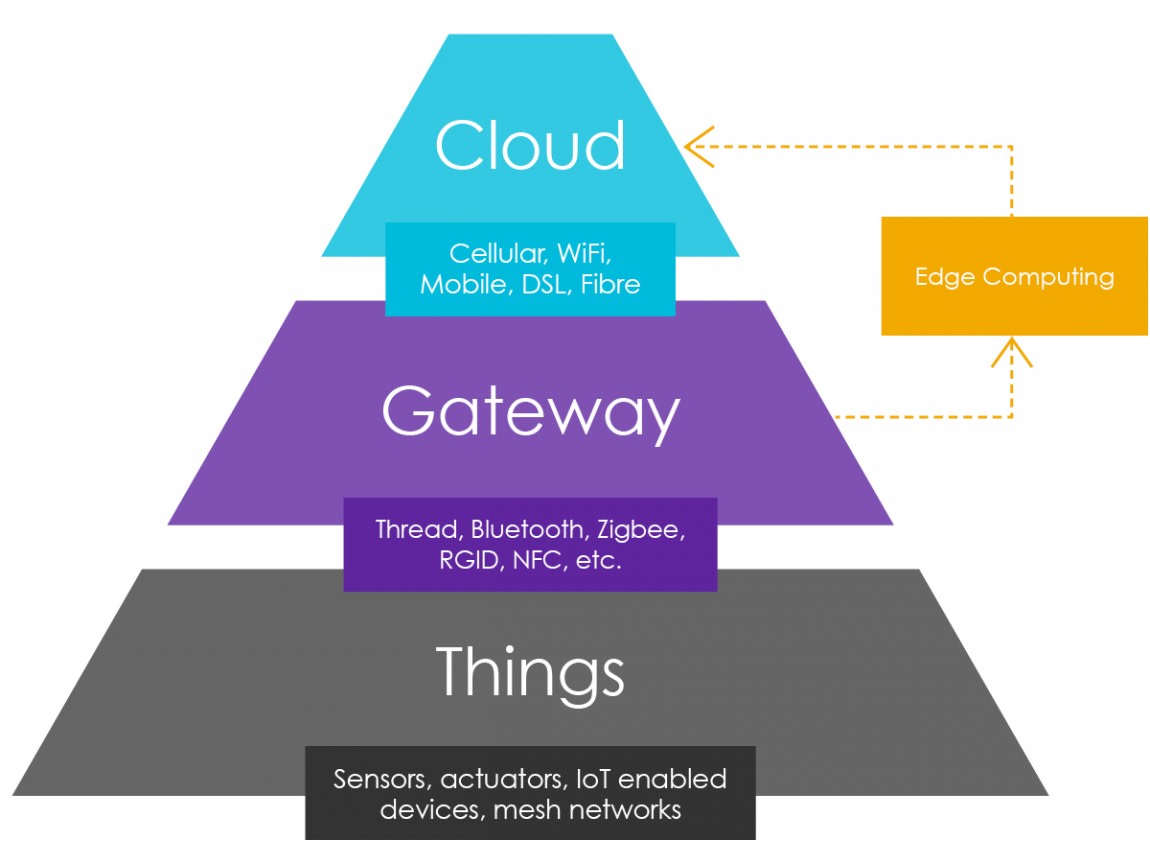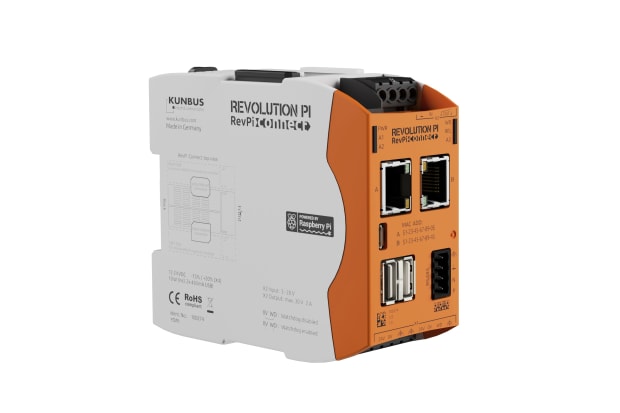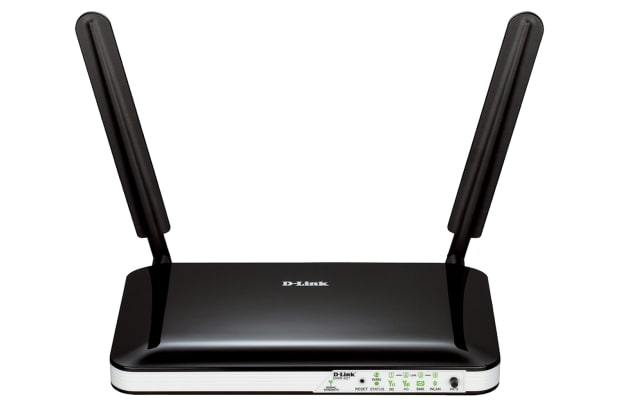- Published 10 Feb 2023
- Last Modified 19 Apr 2024
- 14 min
An Introductory Guide to the Industrial Internet of Things (IIoT)
Discover more about the Industrial Internet of Things, including its uses and benefits, in our introductory guide.

Explore our comprehensive introductory guide to the Industrial Internet of Things (IIoT) to gain a deeper understanding of its applications and advantages.
This guide covers various topics regarding the Industrial Internet of Things (IIoT). We will explain what the IIoT actually is, its impacts on industrial technology and its benefits and challenges.
What is the Internet of Things?
The Internet of Things (IoT) is a term that many of us will have heard - but what exactly does it mean? In short, IoT is a broad term used to refer to all devices that are connected to the internet beyond the familiar mix of PCs, laptops, phones and tablets. It was first used to describe digitally connected devices and products in the consumer space.
What is the Industrial Internet of Things (IIoT)?
Simply put, the Industrial Internet of Things (IIoT) takes the concept of networking devices and connects them to the internet to share data – locally or remotely – in factories, industrial processes and industrial buildings. Sensors collect the information, which is consolidated via a gateway to the local network, then onwards through an edge controller to the internet or the cloud – data servers within large data centres.
IIoT vs IoT
When it comes to the debate of “IIoT vs IoT," the key difference between them lies in the application. Instead of wearable fitness trackers and voice control, the Industrial IoT centres around the real-time collection and analysis of granular data from connected sensors, enabling rapid improvements to efficiency and productivity, instantaneous stock control and significant cost savings.
Direct, automatic control of a device by computer is sometimes referred to as a cyber-physical system.
The Industrial IoT is based on an established approach to computer-controlled manufacturing: the ‘distributed control system’. These control functions are assigned across the network, and multiple autonomous devices are interconnected, each able to adjust and optimise their own section of the manufacturing line without a central control system and the associated risk of a single point of failure. The IIoT takes advantage of modern cloud computing to allow data sharing, visualisation and analysis – all in near real-time.
The IIoT has grown into a huge sector in just a few short decades. In Hong Kong, the Industrial IoT market is anticipated to experience an annual growth rate growth rate (CAGR 2024-2028) of 11.38%, taking up a market volume of US$1.77 billion by 2028.
What is the Difference Between Industry 4.0 and the Internet of Things?
You may also have heard the term Industry 4.0 in relation to the IoT. Although the terms are sometimes used interchangeably, they are not synonymous with one another. This is because the IoT and IIoT are, in fact, subsets of Industry 4.0.
Industry 4.0 is a broader term that encompasses the accelerating use of - and benefits derived from - all the advanced automation technologies now available to industry and smart manufacturing, including:
- Machine-to-Machine (M2M) communication
- Autonomous systems implementation
- Seamless cloud computing
Artificial intelligence and related ‘cognitive’ technologies, such as image recognition
The History of the Internet of Things (IoT) and Industry 4.0
The Internet of Things may seem like a very modern concept, but some of the core Industry 4.0 technologies date back to the 1960s. The programmable logic controller (PLC) - effectively an early industrial computer - was invented in 1968 and designed to fine-tune the manufacturing process. The first distributed control systems for industrial settings appeared in the 1970s, sparking the gradual supplementation of manual labour with automation within factories.
The Internet of Things as we know it today first came into focus during the following decade. However, it was not until the early 2000s that the IoT first began to move out of university laboratories and into purchasable products. This growth was accelerated by the development of enabling technologies like Bluetooth, near-field communication (NFC), and 4G/5G cellular networks.
Further developments followed in the 2000s, including the creation of the now-ubiquitous cloud computing technologies, which accelerated the evolution of the IIoT.
Who Coined the Terms - Industrial Internet of Things(IIoT) and Industry 4.0?
We know where the Internet of Things originally came from, but it is trickier to pinpoint who coined IIoT.
The term 'Industry 4.0' was coined in 2011 by the German government to promote the use of information technology in manufacturing. It signifies the equal significance of modern automation and data-sharing technology compared to the three previous industrial revolutions: steam and water-powered manufacturing in the 18th and 19th centuries, electrification and railway development in the late 19th century, and the digital revolution with the emergence of modern IT in the second half of the 20th century.
We may not know who coined the term ‘Industrial Internet of Things’ for certain, but the name ‘Industry 4.0’ makes logical sense and helps to boost understanding of the meaning behind the concept.

What is the Industrial Internet of Things Used for Now?
Industry 4.0 can bring a wide range of benefits to a broad spectrum of industries and sectors.
Just a few IIoT applications and examples include:
- Smart factories
- Supply chain and inventory optimisation
- Data analytics
- Smart buildings
- Condition monitoring
In order to understand how IoT will impact different industries in the future, it is important to understand how the manufacturing industry is using IIoT now. Of course, manufacturing is not the only sector that can benefit from Industry 4.0. It’s also clear to see how IoT is transforming the energy industry and the retail industry with connected devices and smart systems.
The Effects and Benefits of the Industrial Internet of Things in Manufacturing
So, what benefits does the Industrial Internet of Things bring to manufacturing? Let’s take a look at a few examples of how the manufacturing industry is using IIoT:
- Optimising the manufacturing line: Industrial IoT sensors enable continuous monitoring of the production line from start to finish product. This enables operators to continuously fine-tune the manufacturing process, saving both time and money.
- Inventory and supply chain management: manufacturing stands or falls on the supply of raw materials and components. RFID (radio frequency identification) tags and similar technologies allow components and supplies to be tracked continuously, in real-time, from location to location, providing continuous monitoring of inventory and compensatory adjustments.
- Packaging assessment: Industrial IoT sensors allow manufacturers to monitor the condition of packaging during transit and storage and even assess how customers typically interact with it, enabling improvements to design.
- Real-time manufacturing data: IIoT devices can supply real-time operational data to suppliers, enabling responsive adjustments and also allowing the remote management of factory units.
- Maintenance data: Industrial Internet of Things devices can issue alerts for faults, maintenance needs, and operating issues like high temperatures or excessive vibration. These alerts enable proactive scheduling of maintenance, reducing downtime and lowering the risk of accidents. Combining this data with health and safety records improves overall safety.
- Quality control: IIoT data from multiple sources, including suppliers, manufacturing processes and end-users, can all be combined to enable overall improvements to the design and production of products.
What are the Challenges of Industry 4.0?
This is a complex question to which there is no easy answer.
At its broadest, Industry 4.0 is a configuration of multiple networking technologies, so the biggest challenges focus on the maintenance of strong and secure inter-device connections. This is achieved via:
- Selection of robust, fit-for-purpose networks – either wireless or wired
- Adopting protocols that promote inter-operability, e.g., OPC UA
- Maintaining vigilance about network security in order to ward off any cyber threats
As a result, the principle challenges of the IIoT similarly revolve around data storage and digital security, alongside the additional technological requirements posed by the constant need for uninterrupted device connectivity. It is also important to understand what the security considerations and challenges in adopting the IIoT are in order to ensure a smooth, efficient period of implementation.
So, what are the risks associated with IIoT?
As with all aspects of the digital environment, cybersecurity is crucial when it comes to the Industrial Internet of Things. Many consider the primary risk associated with IIoT to be related to online security, yet the reality is that security issues are rare. Taking precautions, practising cybersecurity, and maintaining a well-safeguarded system are the keys to avoiding the risks associated with IIoT while making the most of the benefits of a connected system.
With that in mind, it’s important to keep abreast of the latest technologies and updates in order to stay prepared and protected as the Industrial Internet of Things continues to evolve over time.
What is the Future of the Industrial Internet of Things?
Both the Internet of Things and the Industrial Internet of Things are constantly evolving. As new technologies become available and businesses become increasingly interested in the benefits of IIoT, more and more possibilities are opened up. This also brings numerous predictions about where the Internet of Things is heading in the future.
While it’s hard to know exactly what the future of IIoT holds, digital connectivity has the potential to change the nature of industry and impact businesses around the world.
Industrial Internet of Things Networks and Protocols
Like any other information technology, the Industrial IoT uses a variety of protocols (data communication formats) and network types. As a result, it’s important to get clarity on each if you plan to create an IIoT infrastructure for your manufacturing premises.
IIoT Networks
IIoT devices can use different networking solutions depending on a number of factors, including their distance from each other, the amount of data they need to exchange, the location they will be used within, or power consumption considerations.
The list of IIoT-suitable networks is expanding all the time, but key examples include:
Wi-Fi
This wireless networking technology has become very familiar to most of us since it became the standard method for connecting PCs, smartphones and tablets to the internet. It is a derivative of the established wired ethernet network and is based on the IEEE (Institute of Electrical and Electronic Engineers) 802.11 wireless standard.
Zigbee 3.0
Zigbee 3.0 is a low-power network widely used in industrial and factory settings. The same team created the related protocol Dotdot, and this has become an internationally accepted, universal method of secure connection between different Internet of Things devices.
IIoT Data Protocols
- MQTT (Message Queue Telemetry Transport) is a lightweight, low-power protocol used to transmit simple data sets between sensors and applications. It sits on top of the standard Internet networking system TCP/IP (Transmission Control Protocol/ Internet Protocol).
- AMQP (Advanced Message Queuing Protocol) is an international standard focused on the transmission of messages between devices. It is approved as an international standard.
- OPC UA (OPC Unified Architecture) is an open machine-to-machine communication protocol supporting cross-platform industrial automation data sharing and robust interoperability of systems.
How to Implement and Install an Industrial Internet of Things (IIoT) Infrastructure
Implementing an Industrial Internet of Things (IIoT) infrastructure is crucial for manufacturing premises aiming to leverage connected devices and analytics to enhance operational processes. The following comprehensive steps serve as a general guideline towards a successful deployment:
- Assessment and Planning: An IIoT integration starts with an asset evaluation to identify and evaluate existing assets for IIoT readiness. Concurrently, a data collection strategy will be developed to outline how data will be collected, stored, and analysed from manufacturing equipment and processes, laying the foundation for leveraging IIoT's full potential. Moreover, a risk assessment is conducted to identify and mitigate potential security threats, ensuring the IIoT framework's security.
- Sensor Deployment: Strategically place sensors across your manufacturing floor to monitor various parameters such as temperature, pressure, or vibration. Ensure sensors are compatible with your network and can withstand industrial environments.
- Controller Setup: Controllers are akin to the nerve centre, processing data from sensors, executing computations and storing information for further action or analysis. Install controllers, such as PID (Proportional Integral Derivative) controllers, that can handle data from sensors, perform necessary processing, and communicate with the network.
- Network Establishment: Build a network infrastructure that supports high-speed data transmission and is secure against cyber threats. Consider using industrial-grade routers and switches that offer redundancy and failover capabilities.
- Cloud Integration: Choose a cloud service provider specialising in industrial applications to ensure your data is stored securely and is accessible for analysis. Integration with the cloud enables scalability and remote access to IIoT data.
- Application Development: Develop or customise user-facing applications that offer intuitive interfaces for monitoring system performance, visualising data, and managing alerts.
- Data Analytics: Implement data analytics tools to derive actionable insights from collected data for future decision-making.
- Pilot Testing: Facilitate necessary adjustments based on real-world applications. Collect feedback to identify areas for improvement to ensure the system fulfils the necessary requirements.
- Security Implementation: Ensuring the security of the IIoT infrastructure involves data encryption to protect sensitive information and access control measures to prevent unauthorised network access.
- Monitoring and Maintenance: Maintain optimal performance and longevity of the infrastructure by continuous monitoring in real-time and regular maintenance.
- Scalability and Future Expansion: Plan for scalability to ensure the IIoT infrastructure can accommodate future growth and expansion.
FAQs
How to Start Your IIoT Journey
Are you ready to begin your IIoT journey? Explore the related product ranges below and kick-start your industrial technology revolution.

